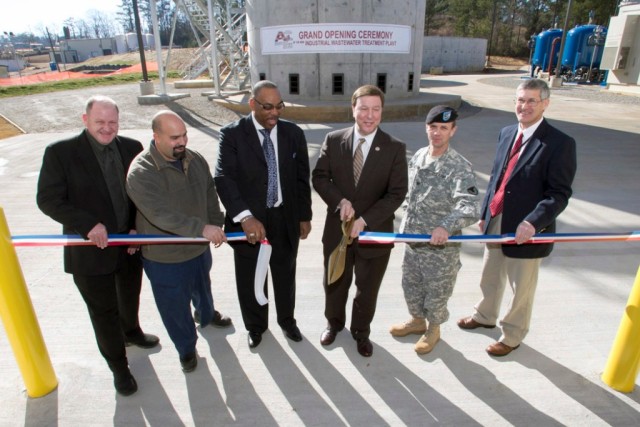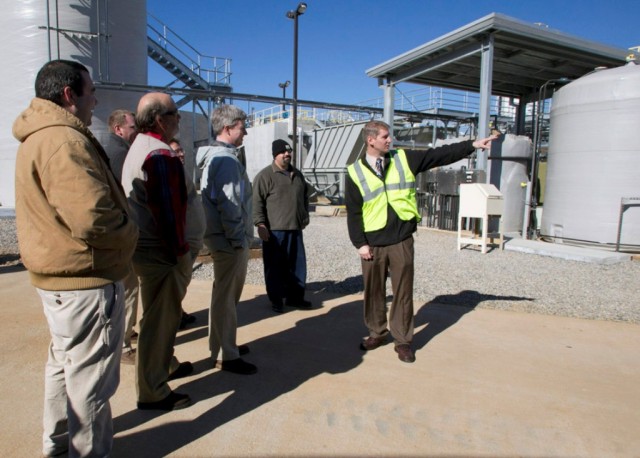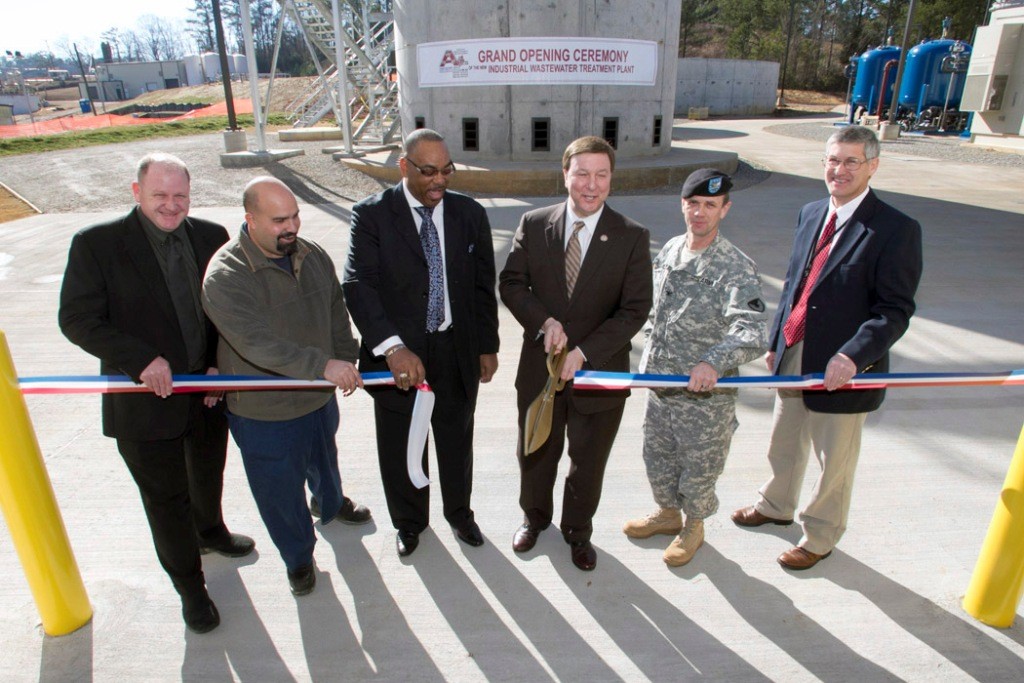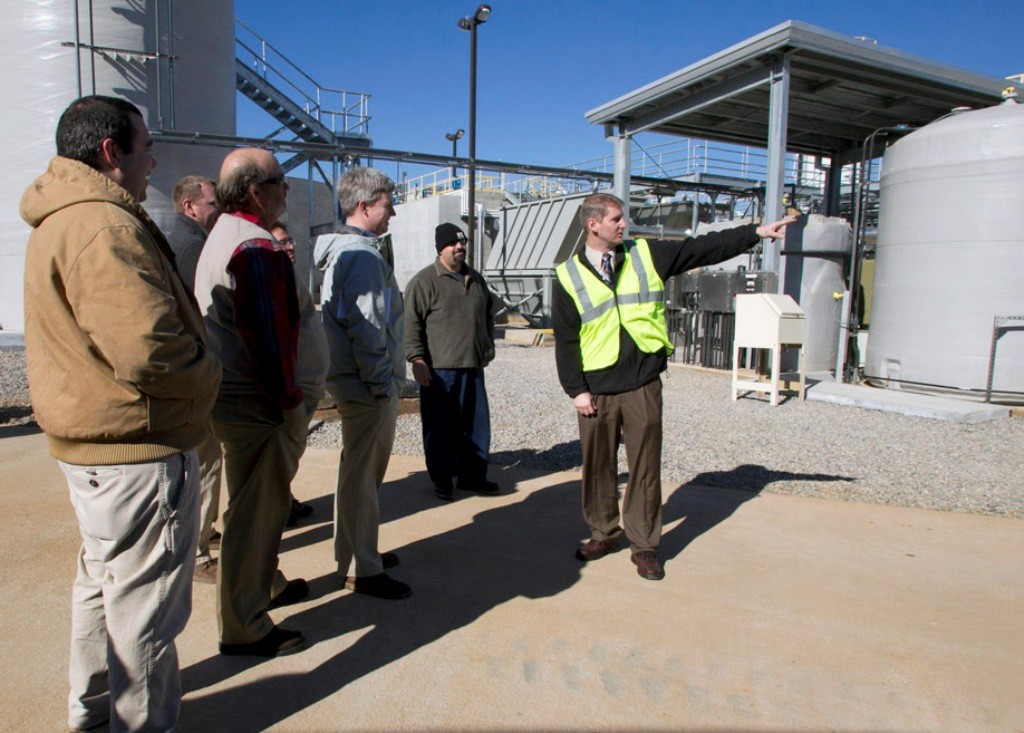ANNISTON ARMY DEPOT, Ala. - Anniston Army Depot commemorated the grand opening of its $40.1 million industrial wastewater treatment plant with a ribbon cutting ceremony here Jan. 21. Officials said the event is a major milestone in the depot's history of producing military equipment for the U.S. and its allies.
"This is a unique opportunity in the depot's history," said Depot Commander Col. Timothy Sullivan. "We understand the responsibility of protecting the environment and the health of the people in our community."
The new plant is expected to resolve regulatory compliance issues and enhance water purification performance, according to environmental experts here. It can process an average of 600,000 gallons of industrial wastewater per day, doubling the old plant's capacity.
In partnership with the U.S. Army Corps of Engineers and contractors O'Brien & Gere/Crowder Construction Joint Venture Team, the depot broke ground in 2008 on property adjacent to its groundwater and sewage treatment plants. The co-location of the treatment facilities and their adjoining environmental laboratory allows plant operators to work more efficiently, especially with cross-training efforts.
"Constructing this plant shows that Anniston Army Depot is committed to enhancing its capabilities and investing in the future," said Bruce Williams, ANAD's director of risk management.
Built more than 30 years ago, the old IWTP is located in the heart of the Nichols Industrial Complex where mechanics, welders and machinists run two shifts in their work to disassemble, repair and rebuild tanks and weapons. Demolition of the now-defunct plant will allow the Directorate of Production to reclaim valuable real estate in the NIC, said Tim Smith-Lindsey, engineer with the depot's Directorate of Public Works.
Maintenance management specialist Joshua Mitchell said, in 2010, the former IWTP supported the production of 1,645 combat vehicles and 36,470 small arms.
Industrial wastewater treated at the plant comes from production operations like component cleaning and finishing, metal plating, chemical cleaning and vehicle washing. "The new IWTP will protect the quality of the area's water resources as well as the health and well-being of the community," said Dustin Gillihan, environmental engineer.
In addition to its increased capacity, the plant has a biological treatment process that gives operators the option to bypass the sewage treatment plant before the water is discharged to nearby Choccolocco Creek. Water must meet National Pollutant Discharge Elimination System permit limits, said Gillihan, and the plant has an effluent holding system to ensure compliance.
While the old plant was manually operated, the new facility will be mostly automated. "This allows the depot to use resources more efficiently and provides for better process control," said Smith-Lindsey.
Williams noted that the construction project was completed ahead of schedule, with crews finishing the work weeks before expected. "This was great work on the part of the team. It was done efficiently, and it was done well," he said.
"This (ribbon cutting) is a good day for the depot. There's been a lot of those the last few years, and we're going to make sure it keeps happening," said U.S. Rep. Mike Rogers, R-Saks, who was part of the Jan. 21 ceremony's official party. "I want to thank (Richard) Shelby and (Jeff) Sessions for working this effort from the Senate's side."
"The construction of this plant demonstrates that we've had political and Army leaders who've recognized what we bring to the Department of Defense and the Anniston community," said Williams. "And we've done a phenomenal job to ensure we've not been a burden on the environment and the people in our community."




Social Sharing